The Sami (indigenous skandinavian) Gamme or Goahti (turf home)
|
|
| |
|
|
|
|
|
| |
|
These are the building stages of a Sami (indigenous Scandinavians) arch-beamed
Gamme or Goahti (turf home). This one was built for the International
Indigenous Festival,
Riddu in Samuelsberg, Norway. The frame is made from birch roundwood pegged together
with wood; no
nails are used. Poles of roundwood are laid against the frame,
pegged and covered with overlapping sheets of birch bark which are
kept in place by layers of turf stacked against the sloping
walls. |
|
|
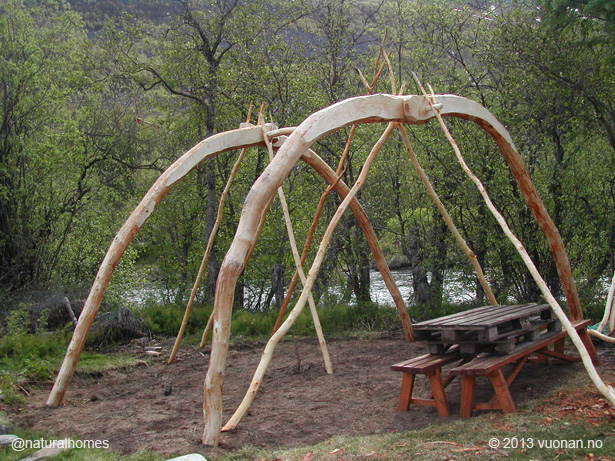 |
|
|
|
|
|
|
|
|
|
The
arch-beamed goahti is called a bealljegoahti in Sami. It consists of
an inner framework of two sets of curved wooden beams, called
bealljek. To get the curved trees you have to look for birch
growing on hillsides. The trees there bend near the root to be
able to grow straight up. The whole structure sits on stones with the final
weight of the turf and its parabolic profile giving it stability. |
|
|
|
|
|
|
|
|
|
|
|
|
|
|
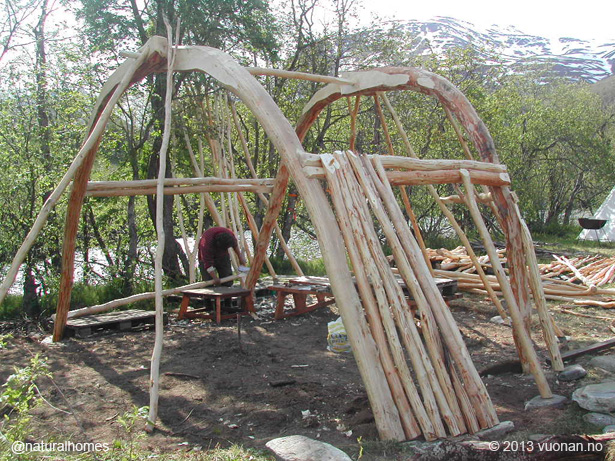 |
|
|
|
|
|
|
|
|
|
|
|
|
|
|
Literature, dating back to the 1700s, explains how the goahti
was divided into nine areas. The areas were marked by logs or
stones. The main division went straight across from the entrance
to the back wall. In the middle of this was the fire
place (arran in Sami). On both sides of the door were logs that
defined a path to the fire place. The space between the door and the fire
place is called the 'uksa'. From the fire place and back towards
the back wall there were also two wooden logs. This space is called
'boassu', and is the spiritual space in the home. The rooms
on either side of the fire place could be divided into several
sections where people slept, ate and worked.
|
|
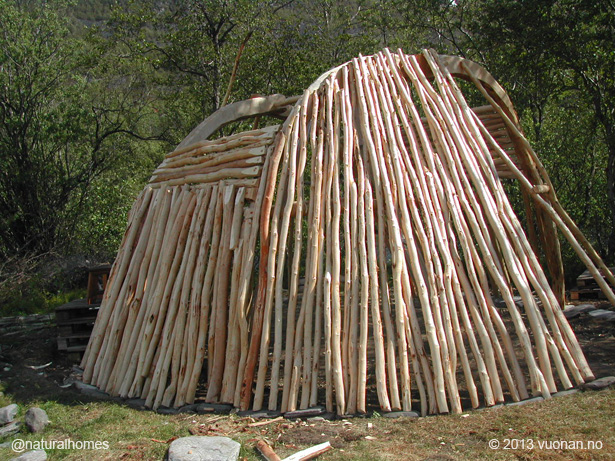 |
|
|
|
|
|
|
|
|
|
|
|
|
|
|
Different female goddesses occupied the uksa, boassu and arran
and there
were social rules that determined where different family members and
guests should stay in the home.
At the front and back of the home are stone vents, seen here
(above) just at the builder's feet and the picture left, which also shows the
lower layers of birch bark held in place with a thick heavy layer
of turf. All the materials, wood, bark, turf and stone are found
locally. With regular maintenance a bealljegoahti will stand for
many decades. You can see the remains of an abandoned Swedish
goahti (a torvkåta) on the
Natural Homes Facebook Page.
|
|
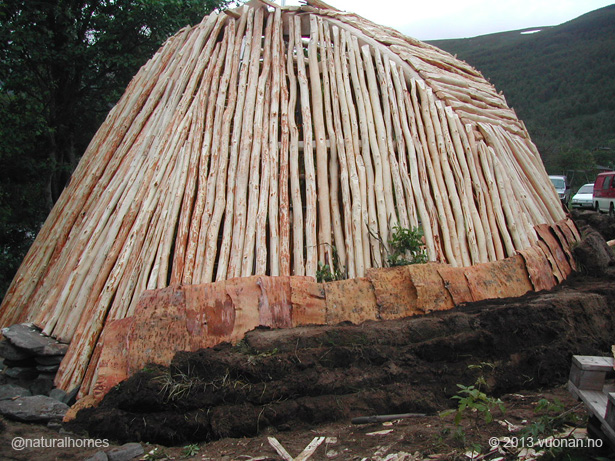 |
|
|
|
|
|
|
|
|
|
|
|
|
|
|
A goahti like this with a diameter of about 5m (16ft) will use around 200
small trees. If straight trees are not available then during midsummer
the poles can be pressed under large
rocks to dry and straighten. All the trees should be stripped
of their bark with a
drawknife. The ground inside the goahti is slightly sloping
towards the door with all parts of the interior slightly raised in
relation to the uksa.
|
|
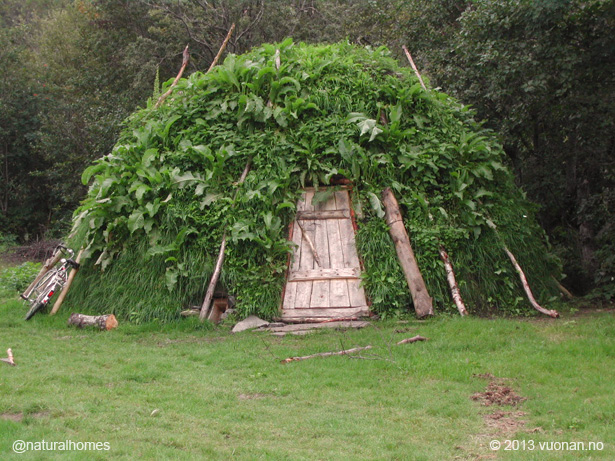 |
|